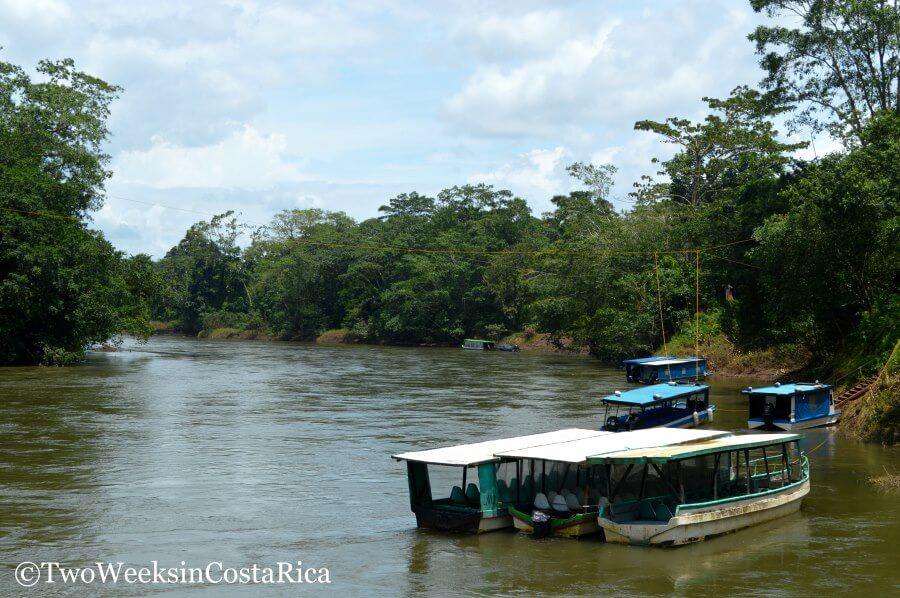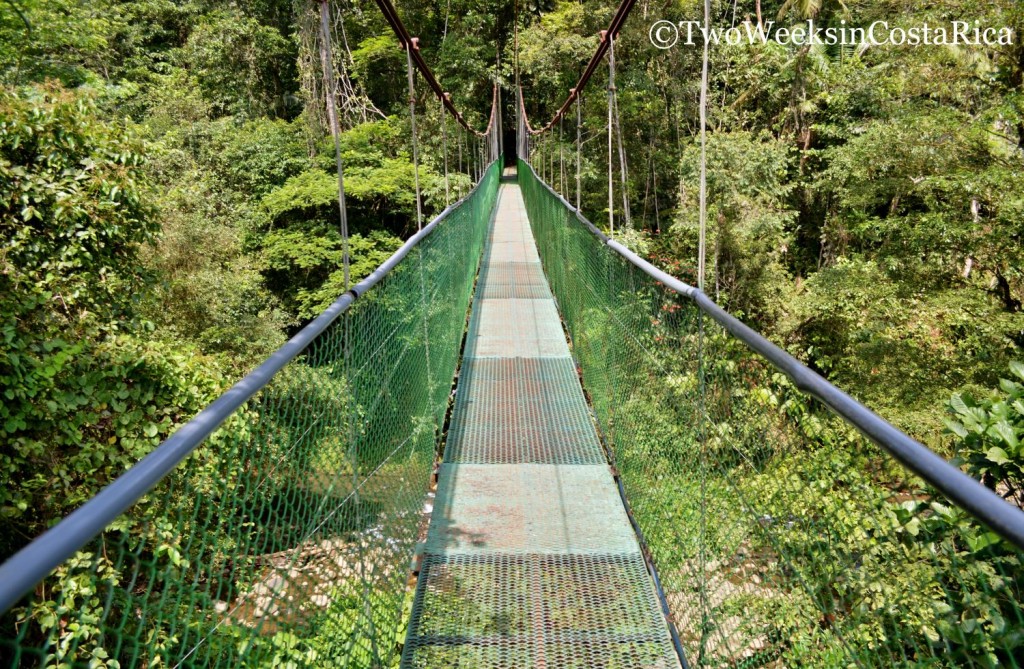As we cover more of Costa Rica, our travel planning has become much more spur of the moment. This was especially true for our most recent road trip. The weekend was quickly approaching so we got out a map, pointed to a town we had never been to, and started packing. Before we knew it, we were on our way to Puerto Viejo de Sarapiqui in Costa Rica’s northern lowlands. This area of the country is not a popular tourist destination yet, but boasts an amazing amount of biodiversity and should be on every nature lover’s list.

What’s unique about the Sarapiqui region is that it sits relatively low in elevation and has several large rivers which converge in Puerto Viejo de Sarapiqui, the largest town in the area. Around these rivers is a mixture of farmland and protected tropical forest. It’s in these vast swaths of humid jungle that a lot of environmental research takes place. Scientists and university students from around Costa Rica and the world come to study everything from birds, bats, and bees, to trees, ferns, snakes, frogs, and more. Luckily, most of the reserves also have trails for the casual nature enthusiast like us. We chose Tirimbina, a biological reserve, research center, and lodge near the small town of La Virgen, just outside of Puerto Viejo de Sarapiqui.
The Reserve
Tirimbina protects 345 hectares (852 acres) of pre-montane tropical forest which hosts a wide array of different ecosystems. What appealed to us were the easy-to-access network of trails, massive hanging bridge, and impressive birding statistics. Those of you who follow our blog know that we didn’t come to Costa Rica as birders, but now break out the binoculars at every fleeting chirp. Needless to say, we were ecstatic at the chance to see some of the 132 different species of feathered friends spotted on the property.
As soon as we entered Tirimbina, we understood why the nature viewing was so good. The area around the entrance had been planted with all sorts of fruiting trees and shrubs that attract wildlife, and the neighboring jungle was lush. We didn’t have to go far before seeing dozens of birds, including a Keel-billed Toucan, butterflies, some howler monkeys, and a sloth. Following the paths toward the river, we came to the hanging bridge. We’ve been on a lot of these bridges in Costa Rica, but this was one of the most impressive. It is really long, stretching about 200 meters (650 feet) over the raging Sarapiqui River, and has a spiral staircase halfway across that leads down to a small jungle-covered island.

Once we crossed the bridge, we continued on and explored the four trails, trekking across a smaller hanging bridge and through different levels of the forest. Along the paths, we were able to spot more birds like Blue-gray Tanagers, Broad-billed Mot Mots (our first sighting ever!), Passerini’s Tanagers, and different kinds of warblers and hummingbirds. We also saw some large (and creepy) spiders, the tracks of a jungle cat, leaf-cutter ants, some frogs, an iguana, bullet ants, and many spectacular trees and plants.
Tips: Tirimbina has 9 kilometers (5.5 miles) of trails. Our favorite was the Corteza because it was the most remote. With the exception that trail, which goes deeper into the jungle, the trails are fairly flat and good for all fitness levels and kids. It took us about three hours to explore the whole reserve. While the hike isn’t too difficult, we recommend closed-toe sneakers or hiking boots. We almost stepped on a bullet ant a couple of times and were glad to be wearing boots.
Just as we were crossing back over the river, an afternoon thunderstorm rolled in and brought more of the rain that is typical for this wet area of the country. As we hustled back to our room, we got to see the animals getting ready for the storm too. The howler monkeys began making their deep grunts, the sloth we saw earlier was hunkering down under a branch, and the birds were calling and taking roost in the treetops.

The Lodge
The lodge at Tirimbina is surrounded by rainforest, and we loved being able to roll out of bed and explore the trails around the garden before anyone else arrived. Something else we liked was Tirimbina’s commitment to the environment. Costa Rica has a lot of eco-lodges but sometimes it’s questionable how eco-friendly they actually are. The lodge at Tirimbina used an onsite bio-digester for wastewater, solar hot water system for the rooms, and composted, recycled, and encouraged energy efficiency—something you don’t see everywhere. They also work with area schools to teach local kids about conservation.
Tirimbina has two types of rooms for non-researchers. We recommend the cute deluxe rooms over the very simple standard ones for a more comfortable stay. With a reservation you are also given free access to the trails and a nice breakfast the next day.

After chowing down some gallo pinto (rice and beans with eggs), we hit the road to start our journey back to Lake Arenal. Our visit to Sarapiqui had been amazing—we loved exploring this ecologically rich area of Costa Rica—but on the way home, it got even better. We were lucky enough to happen across a magnificent hidden waterfall. If you’re ever driving from Sarapiqui or Poas Volcano towards La Fortuna and Arenal Volcano, be sure to check out Catarata del Toro. It was one of our favorite waterfalls in Costa Rica!
Post by: Matthew Houde and Jennifer Turnbull-Houde

